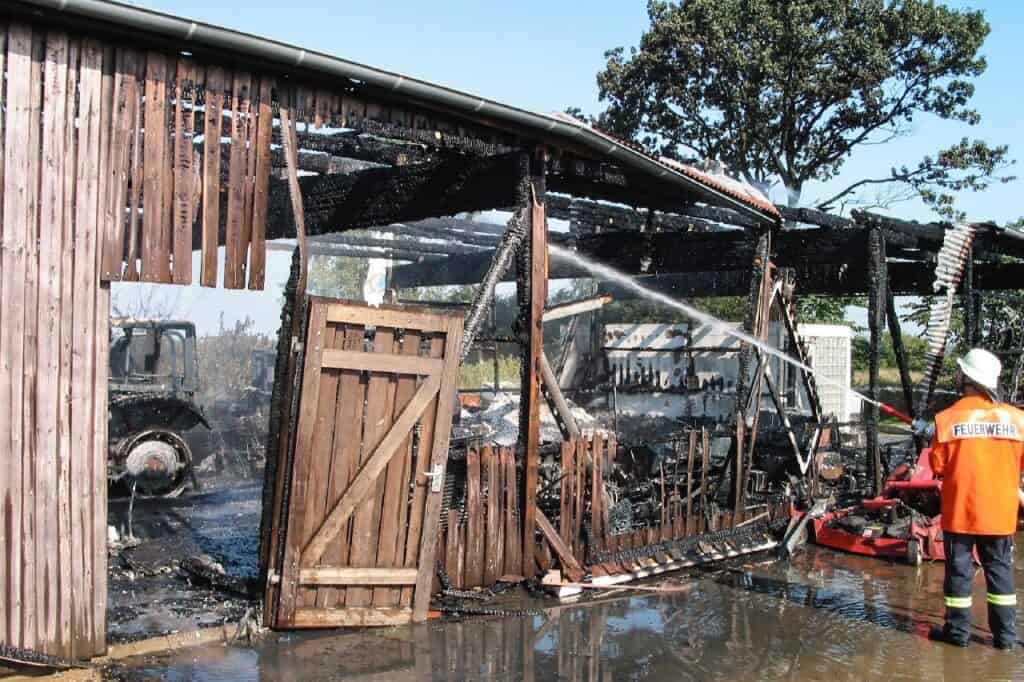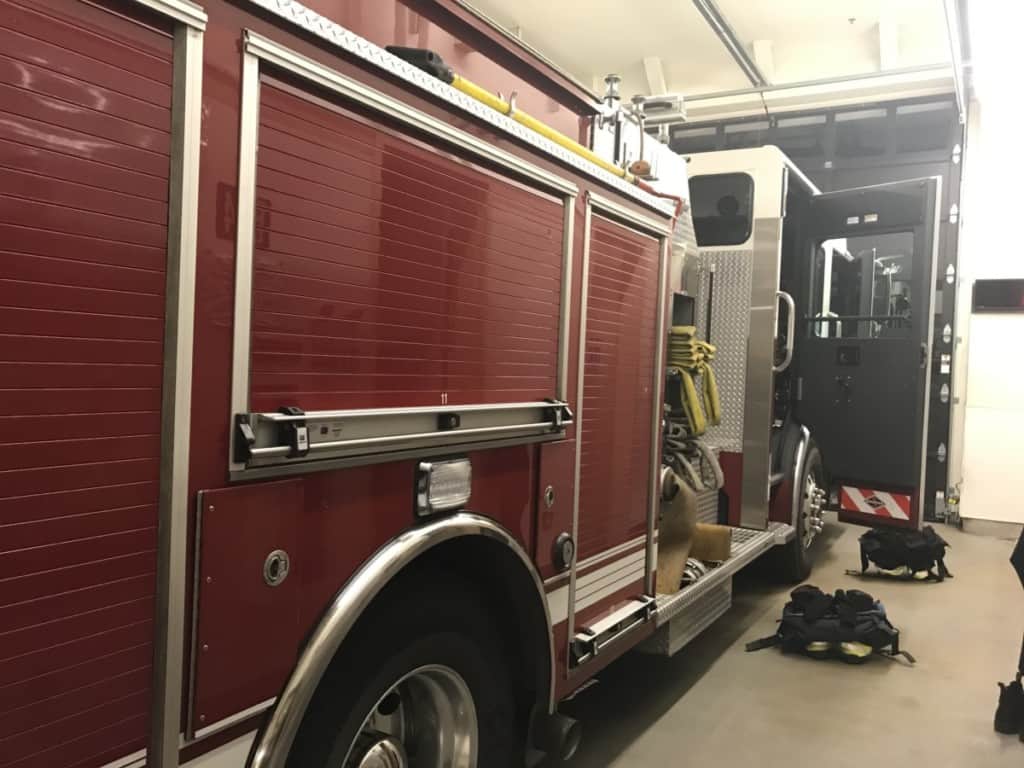Had a fire recently and wondering how long it will take for the insurer and the fire department to investigate what happened and to ensure that everything is settled equitably? What happens if there are suspicious circumstances? Well, the good news is that a fire investigation is a well-understood process, so we can help you understand how long this process should take.
A fire investigation can take anywhere from a few days up to a few months, depending on; the size of the fire, number of witnesses, loss of life or property, or suspicious activity.
However, all investigations for fires follow a similar process. Here is what you need to know about them.
Your # 1 priority is keeping your family safe. As a firefighter, I recommend everyone has updated smoke detectors that don’t require battery changes, like these ones from Kidde, a fire extinguisher, like this one from Amerex, and a fire escape ladder if you have bedrooms above the first floor, I recommend this one from Hausse.
Also read: How to Put Out a Fire on Someone’s Clothes: A Guide
How Long Does A Fire Investigation Take?

It depends.
As we said at the start, simple investigations can be handled quickly and promptly, but major investigations can last much longer, sometimes months. It really comes down to how much evidence and witness information has to be sorted through to determine the cause.
A small, simple fire will usually only take one to two weeks to finish the fire investigation.
As Kenny Poole, the Fire Marshal of Fredrick County told the Carroll County Times,
“Not everything is like it works on TV. You have the ones (fire investigations) that go for days, months, years.”
His Deputy State Fire Marshal Bruce Bouch concurred with this,
“The biggest misconception is the time factor,” he said, “as much as we would love to have some advertisements in the middle and have everything done in the hour.”
https://www.baltimoresun.com/maryland/carroll/news/cc-major-fire-follow-up-20170830-story.html
Also read: How Long Does It Take To Put Out a House Fire?
The First Step In Investigating A Fire: Arrival At The Scene
Fire investigations are conducted through a scientific process.
In the USA the investigators are often required to be qualified by the National Fire Protection Association (NFPA) and meet the minimum standards laid out in NFPA 1033, The Standard for Professional Qualifications for Fire Investigator.
This isn’t a simple thing to get. There are 16 specific areas listed in which the investigator must obtain further education (beyond the level obtained at school).
If this isn’t the route that the investigator follows to qualification, both the National Association of Fire Investigators and the International Association of Arson Investigators offer alternative qualifications of equal standing.
When an investigator begins an investigation into a fire they are required to do two things:
The first is to ensure the safety of the crime scene for the chain of evidence. Fire investigations are sometimes conducted on suspicious fires and thus, the whole of the scene is potentially a crime scene. That means that the chain of evidence, etc. must be preserved as the investigator works.
Second is the security of the scene. The investigator will also want to ensure that the area under investigation has been fully secured – this prevents other people from either obstructing the investigation or interfering with it (either by accident or design).
They will also, if they’ve arrived early enough, want to work with the fire department to prevent any potential destruction of evidence. This occurs when the fire hose sprays high-pressure water over potential evidence. Firefighters are trained to try and avoid this kind of damage, but that isn’t always possible.
The procedures that they use to do this will vary depending on the individual scene and the size of the case.
The Second Step: The Scene Investigation
Investigating fire causes, especially with suspected arson, is actually very tricky.
You see in most crimes, once the crime has been committed there tends to be a lot of evidence just lying around (if you know how to look for it) but with arson – much of the evidence tends to go up, quite literally, in smoke.
Worse, this is also true of an absolutely normal fire too. So, for example, if the electrical circuit box develops a short and then catches fire – it is likely to be completely destroyed by the fire itself.
This video talks about how fire investigators determine where a fire started:
The investigator’s main job is thus to sift through the remains of the fire and to try and piece together the series of events that caused the fire without access to the main source of data.
This isn’t easy and because there are potentially a huge number of fields involved in this kind of investigation, it is rare for a fire investigator to have mastery of all of them. They may call in forensic engineers or representatives from other disciplines to help them pursue specific parts of the investigation.
However, at this second stage of the investigation, the fire investigator will tend to look at the external structure of the fire zone first, followed by the interior structure, and then focus their efforts on narrowing down a point of origin for the fire.
It is the determination of that point of origin that ought to help target what an investigator is looking for.
One thing that is very common if the fire was started by an arsonist is to find traces of accelerant (chemicals such as alcohol or gasoline that are used to make the fire burn faster). Investigators can take samples from the scene and then use various chemical tests to ascertain what is present there.
In this video, an arson investigator talks about the 6 signs of arson:
The Third Step: Documenting The Evidence Of The Fire
The third phase of the fire investigation is really about generating data. The more information that a fire investigator has on hand, the easier it will be for them to determine the exact cause of the fire.
So, now the investigator makes sure they take all the samples that they will need. They bag and/or tag these samples and any other evidence that they wish to remove from the scene with any appropriate notes on how they were found, where they were taken from, what to investigate, etc.
They also need to sketch the scene so that it can be used as a reference when the investigator no longer has access to it. They don’t need to be a great artist for this and, of course, they are also able to photograph the scene and any evidence that they need to.
In short, they are building up a profile of the fire for examination by one of two major scientific methods:
- The process of elimination – the investigator rules nothing out and simply looks at the evidence and rules each potential issue out as the evidence proves that it was not possible
- The process of probable – the investigator usually has a working theory by this stage of the investigation and they will then work as though the most likely cause of the fire is what happened unless they find evidence to contradict their theory
The Final Step: Wrapping Up The Fire Investigation

Now, all that’s left is for the fire investigator to wrap up their investigation and bring everything together. Depending on what they have found in previous stages of the investigation this will usually involve three distinct phases.
Firstly, the investigator will need to ensure that they have prepared their documentation and reports regarding the scene and any evidence that they have found there. This is so that they can demonstrate that any further action is based on a level of scientific proof, rather than a hunch or intuition.
Next, they may then need to interview some or all of the parties associated with the fire, this can include the experts that the fire investigator used to assist in the investigation as well as material witnesses, etc. If there are a lot of witnesses, this can really slow down the process.
Finally, if by this time they’ve come to the conclusion that a crime was committed – they will also need to present their evidence to the interested parties (including law enforcement) and ensure that the crime is taken seriously.
Later on, they may also be called upon to testify in court against the individuals suspected of the crime.
Conclusion
How long does a fire investigation take? This is one of those “how long is a piece of string” questions mainly because each fire is different, and each fire investigator is different. However, as all fire investigations follow similar processes, it is usually fairly straightforward to identify how far along each investigation is.
If a fire involves the loss of life or the loss of large sums of money, goods, property, etc. then the investigations may go on for a very long time. But the majority of small fires are likely to be wrapped up within a week or two perhaps a little longer depending on the workload of the investigator.
Related Articles
How Do Firefighters Know When There is a Fire?

